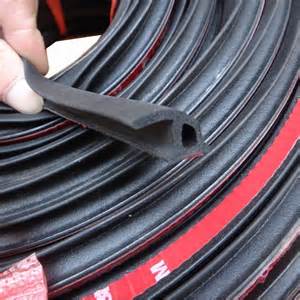
How Are Rubber Extrusions Made?
Custom rubber extrusion products have various uses in the manufacturing, auto and appliance industries, and various other applications. Each extrusion product bears unique characteristics depending on the quality of the rubber and the extrusion process and devices. So how are extrusions made?
What is Rubber Extrusion?
Rubber extrusion and plastic extrusion involve turning rubber compounds into specific shapes for different products and applications. Examples of extrusion products include rubber seals, valves, tubing, vibration reducers, collars, linings, and more.
Extrusion is the process that turns the rubber material fed into the extruder into the final product.
The Extrusion process
There are three main parts to producing rubber extruded products: material, machine, and process. A rubber compound is any raw material fed into a rubber extruder (machine) that heats and pushes it through a die cross-section to achieve the desired product. The final formation usually needs hardening before it’s ready for use in varied applications. Here’s an overview of the extrusion process:
- Rubber Compound Heating
Natural Rubber, EPDM, Viton, Silicone, Neoprene, Nitrile, Butyl, and TPU are the popular rubber compounds used in extrusion. You’ll also encounter SBR, PVC, Provista, Santoprene, Starlink, Synthetic Rubber, and more. Extrusions begin with loading the rubber compound into a feeder hopper and moving it to flutes in a revolving screw. The screws carry the rubber through sections of increasing pressure and temperature, heating and loosening the rubber.
- The Manufacturing Die
Rubber and plastic extrusions come in many shapes, sizes, and dimensions for specific applications in many industries. Since the production is mechanical, it needs a die that shapes the rubber into the desired products. Each product has a unique die, but some dies can extrude more shapes and designs. The increased pressure pushes the rubber into a die located at the end of the extruder. The die receives hot malleable rubber and releases it in specific shapes/products on the other end.
- Mold Vulcanization
Vulcanization refers to hardening the rubber mold/extrusion to form the final product. Extrusions into a manufacturing die are soft and hot, so vulcanization cools and hardens the mold into a safe final product. The term referred to the treatment of natural rubber with sulfur, which is the common practice. However, modern machines accommodate various techniques for hardening different rubber compounds to desired firmness and elasticity.
What to Know About Rubber Extrusion
Rubber extruders result in unique products for specific applications. Each product requires custom vulcanization to achieve the correct firmness or elasticity for the intended purpose. Extruders and manufacturing die also affect the quality of the final product. The rubber compound can swell or shrink during vulcanization, so most tools feature +/- tolerance on the cross-section.
Manufacturers in the auto, motor, solar and appliance industries and anyone seeking custom rubber molds and extrusions need reliable products. Working with experienced and reputable rubber and plastic manufacturers can ensure premium-quality extrusions fit the application. Choosing the suitable rubber compound, die, and extrusion and vulcanization process is crucial.
Quality Custom Rubber Extruded Products
At Clark Rubber and Plastic, we specialize in providing high-quality custom rubber products and extrusions. We’ve got you covered whether you need solid cored extrusions, military-grade profiles, or tubing and sleeves. Our rubber and plastic extrusions serve manufacturers in various industries, and we work with an extensive profile of compounds.
